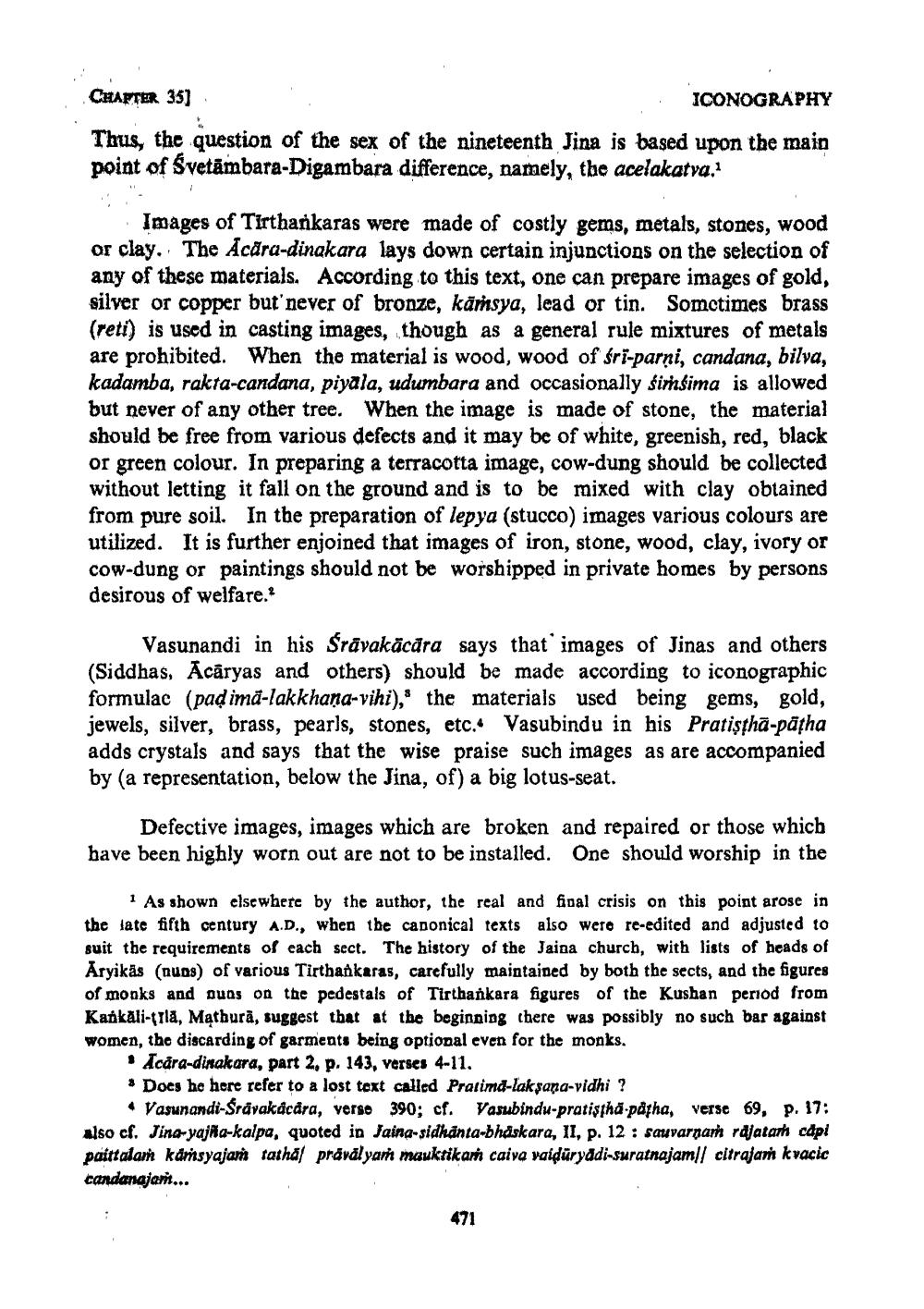________________
CHAPTER 35]
ICONOGRAPHY
Thus, the question of the sex of the nineteenth Jina is based upon the main point of Svetämbara-Digambara difference, namely, the acelakatva.
Images of Tirthankaras were made of costly gems, metals, stones, wood or clay. The Acara-dinakara lays down certain injunctions on the selection of any of these materials. According to this text, one can prepare images of gold, silver or copper but never of bronze, kämsya, lead or tin. Sometimes brass (reti) is used in casting images, though as a general rule mixtures of metals are prohibited. When the material is wood, wood of śri-parni, candana, bilva, kadamba, rakta-candana, piyala, udumbara and occasionally Simsima is allowed but never of any other tree. When the image is made of stone, the material should be free from various defects and it may be of white, greenish, red, black or green colour. In preparing a terracotta image, cow-dung should be collected without letting it fall on the ground and is to be mixed with clay obtained from pure soil. In the preparation of lepya (stucco) images various colours are utilized. It is further enjoined that images of iron, stone, wood, clay, ivory or cow-dung or paintings should not be worshipped in private homes by persons desirous of welfare."
Vasunandi in his Śrāvakācāra says that images of Jinas and others (Siddhas, Acaryas and others) should be made according to iconographic formulac (padima-lakkhaṇa-vihi)," the materials used being gems, gold, jewels, silver, brass, pearls, stones, etc. Vasubindu in his Pratisthā-patha adds crystals and says that the wise praise such images as are accompanied by (a representation, below the Jina, of) a big lotus-seat.
Defective images, images which are broken and repaired or those which have been highly worn out are not to be installed. One should worship in the
1 As shown elsewhere by the author, the real and final crisis on this point arose in the late fifth century A.D., when the canonical texts also were re-edited and adjusted to suit the requirements of each sect. The history of the Jaina church, with lists of heads of Aryikäs (nuns) of various Tirthankaras, carefully maintained by both the sects, and the figures of monks and nuns on the pedestals of Tirthankara figures of the Kushan period from Kankali-tra, Mathura, suggest that at the beginning there was possibly no such bar against women, the discarding of garments being optional even for the monks.
• Acdra-dinakara, part 2, p. 143, verses 4-11.
* Does he here refer to a lost text called Pratima-lakṣaṇa-vidhi ?
• Vasunandi-Śrávakácāra, verse 390; cf. Varubindu-pratistha-påțha, verse 69, p. 17: also cf. Jina-yaja-kalpa, quoted in Jaina-sidhanta-bhaskara, II, p. 12: sauvarnarh rajatar cápi palttalam kárisyajan tathā prāvälyam mauktikaṁ caiva vaidūryādi-suratnajam citrajam kvacie candanajam...
471




